Rethinking Government: Federal Shared Services & Cloud Adoption
Overview
Purpose
The federal government has its sights set on large-scale IT modernization — the 2017 executive order on cybersecurity calls on organizations to, among other things, prioritize the adoption of shared IT services and cloud technologies. So how successful have organizations been in fulfilling this vision? To answer this question, Government Business Council and Okta launched an in-depth research study in December 2017.
Methodology
Government Business Council and Okta released a survey on December 5, 2017 to a random sample of Government Executive, Nextgov, and Defense One subscribers. At least 376 federal employees completed the survey, including those at the GS/GM 11 to 15 grade levels and members of the Senior Executive Service. 57% of respondents are GS/GM-13 and above. Respondents include representatives from at least 34 defense and civilian agencies.
Executive Summary
Federal technologies are perceived to be inferior to the private sector’s offerings
Respondents generally approve of the IT offered by their agency, with 74% considering it ‘good’ or ‘fair’ in terms of quality. Nearly half of those surveyed also feel their organization is taking active measures to invest in state-of-the-art technologies. However, when asked how their own IT compares to available offerings in the private sector, 48 percent feel their agency’s technology is inferior, 23% say it is about the same, and just 12% consider it better.
Agencies are adopting shared services and reporting positive gains
The May 2017 executive order instructing agencies to prioritize shared services (e.g., email, cloud, cybersecurity) appears to be making an impact: 72% of respondents say sharedservices adoption qualifies as a ‘medium’ or higher priority at their organization. Where adoption has taken place, a greater number of respondents note positive gains (rather than negative setbacks) with regard to quality, cost, and timeless of service delivery.
Cloud migration is proceeding in fits and starts
Overall, respondents report mixed success with their organization’s cloud migration: while 36% feel that the journey has been successful, at least one-fifth say their experience has been poor. 40% of respondents give cloud solutions high marks for providing services that can securely store critical data — indeed, the cloud’s ability to store enormous volumes of data is one of the top reasons many organizations are making the transition in the first place. However, the inflexibility of legacy IT environments continues to pose a problem: cloud’s versatility is seen as a major plus, but the rigidity of current IT complicates the migration effort.
IT Tools & Services
Many organizations are prioritizing state-of-the-art technologies.
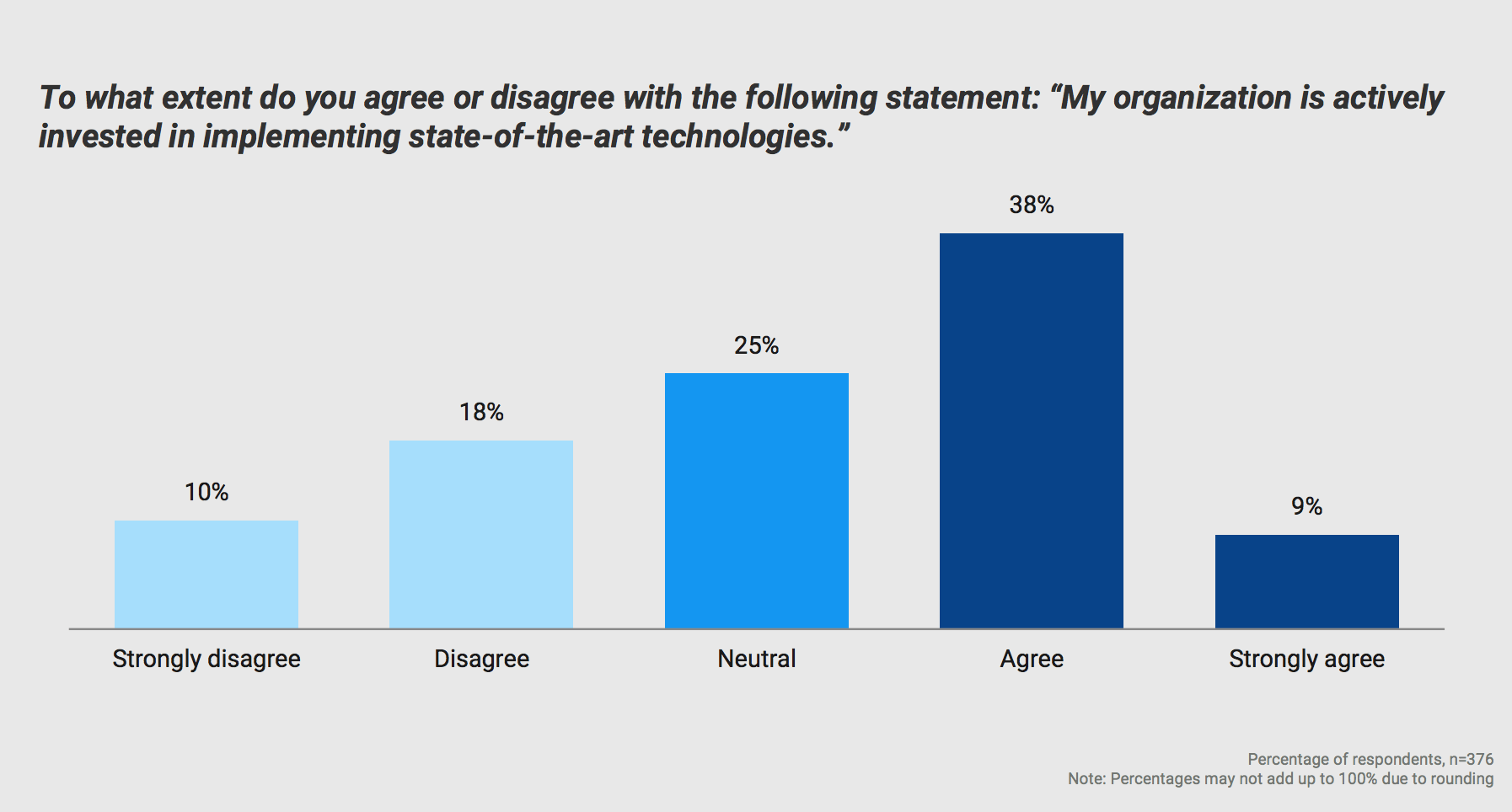
A plurality of respondents feel that their organization is actively invested in implementing new technologies: 47% of respondents agree or strongly agree, 25% are neutral, and 28% disagree or strongly disagree.
Nearly half of respondents feel that their organization is actively invested in modernizing IT.
Federal IT tools/services still have room for improvement
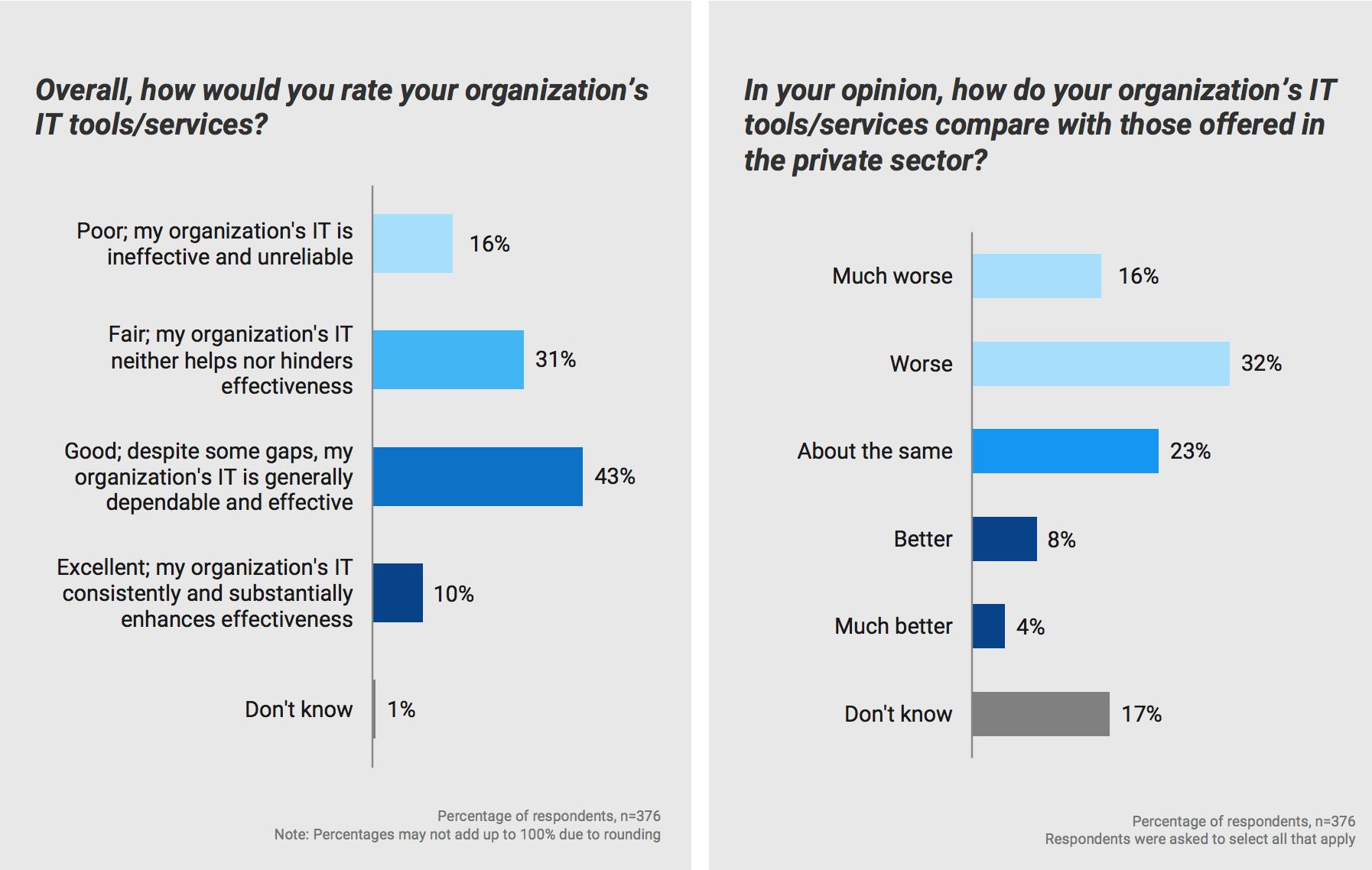
While a majority of federal employees feel that their organization’s IT tools/services are good or excellent, a considerable percentage (47%) deem technologies to be poor or fair. In addition, a plurality (48%) believe that their organization’s IT to be worse or much worse than those offered in the private; just 12% feel that their IT is better or much better.
47% of respondents categorize their organization’s IT tools/services as poor or fair. 47% of respondents categorize their organization’s IT tools/services as poor or fair.
Shared services adoption is not yet a widespread priority among federal organizations
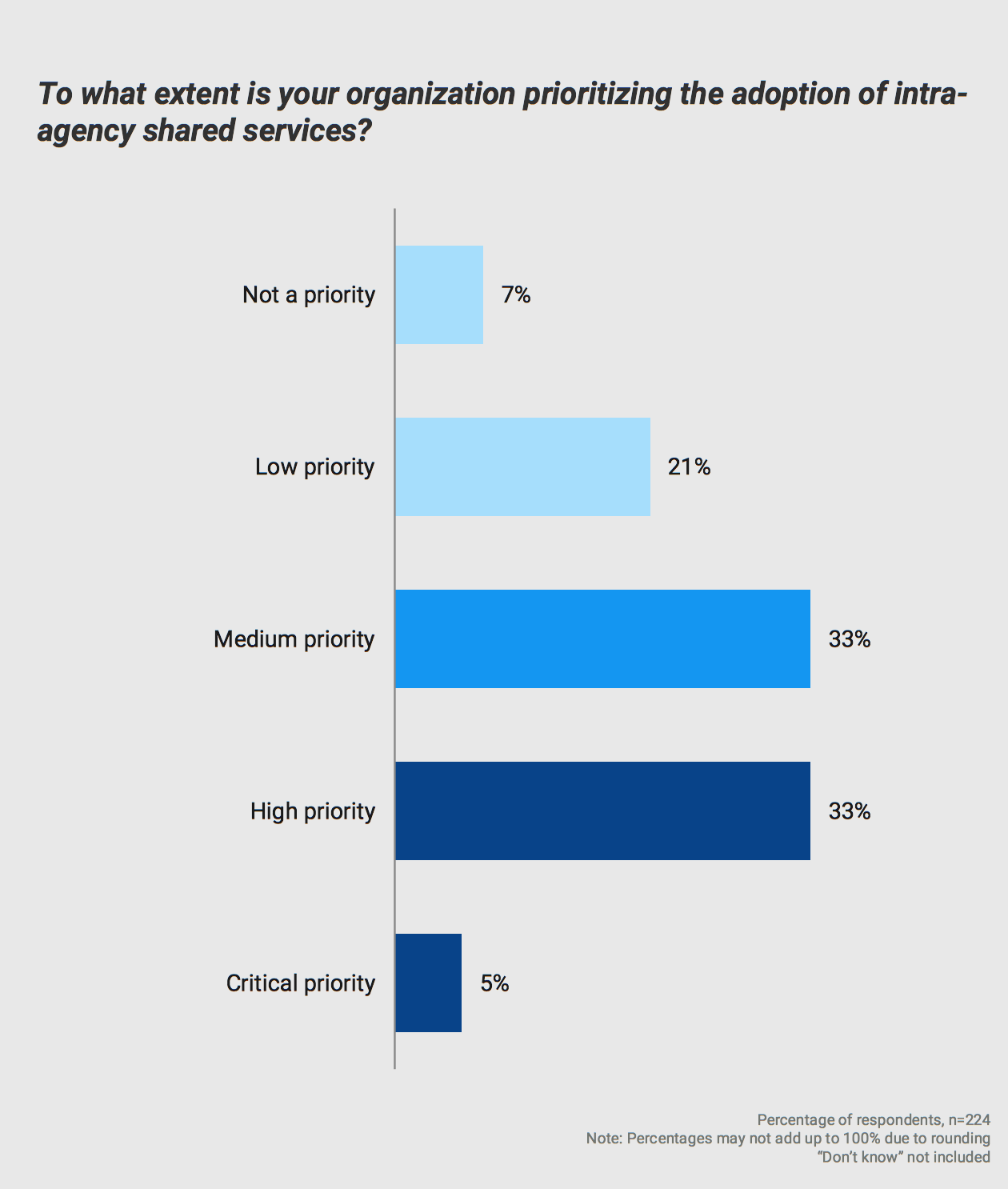
38% of respondents say that adoption of intra-agency shared services is a high or critical priority for their organization, 33% say that it is a medium priority, and 28% say that it is not a priority or a low priority.
38% classify shared services adoption as a high or critical priority for their organization.
Many respondents note positive changes as a result of shared services adoption
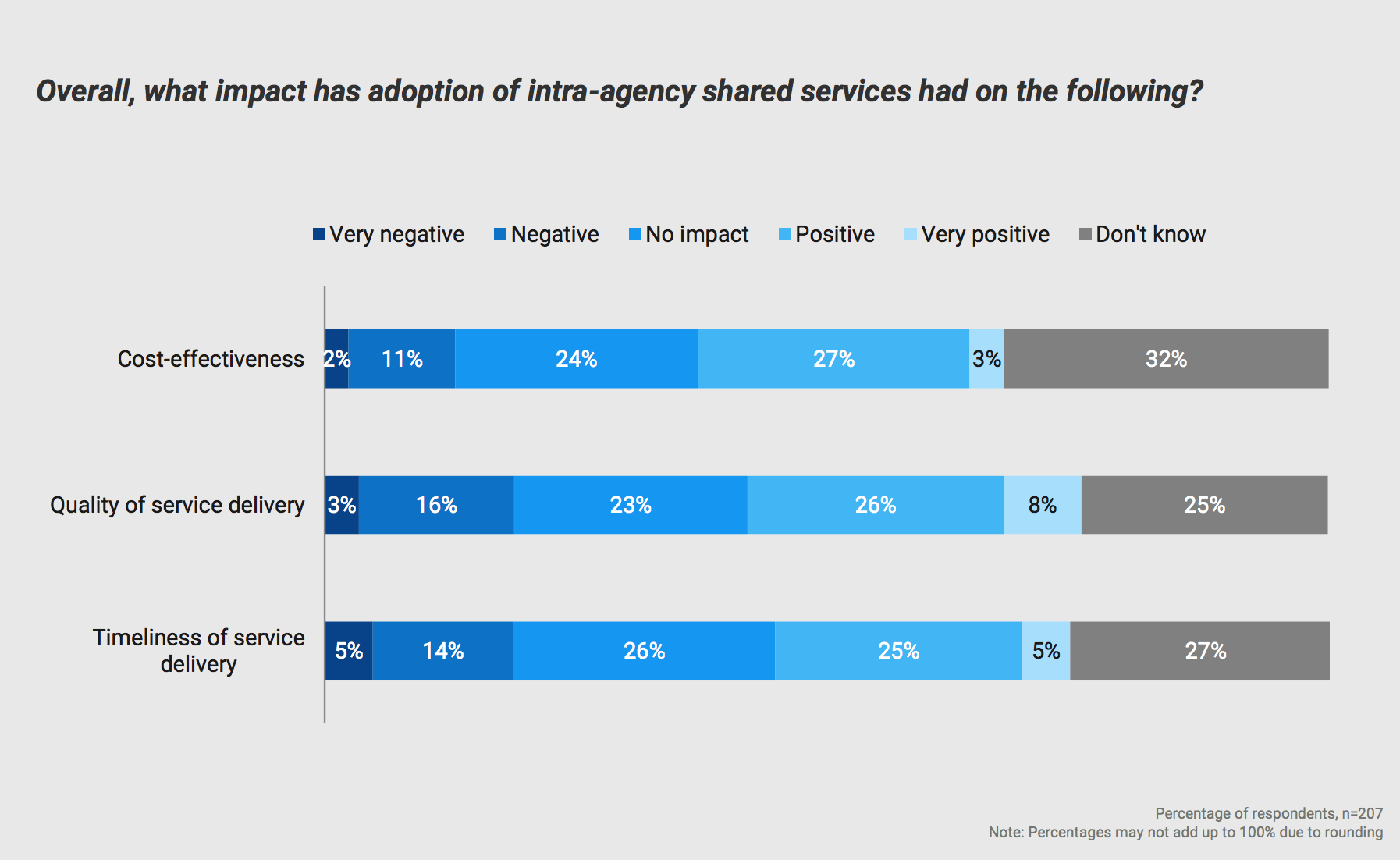
Respondents note the benefits of intra-agency shared services: 30% feel that it has yielded a positive or very positive impact on costeffectiveness and timeliness of service delivery, and 34% note the same outcome with regard to quality of service delivery. However, many are also unsure of the overall impact of shared services adoption on their organization.
Cloud Migration
The federal government is still at the beginning of its cloud migration journey
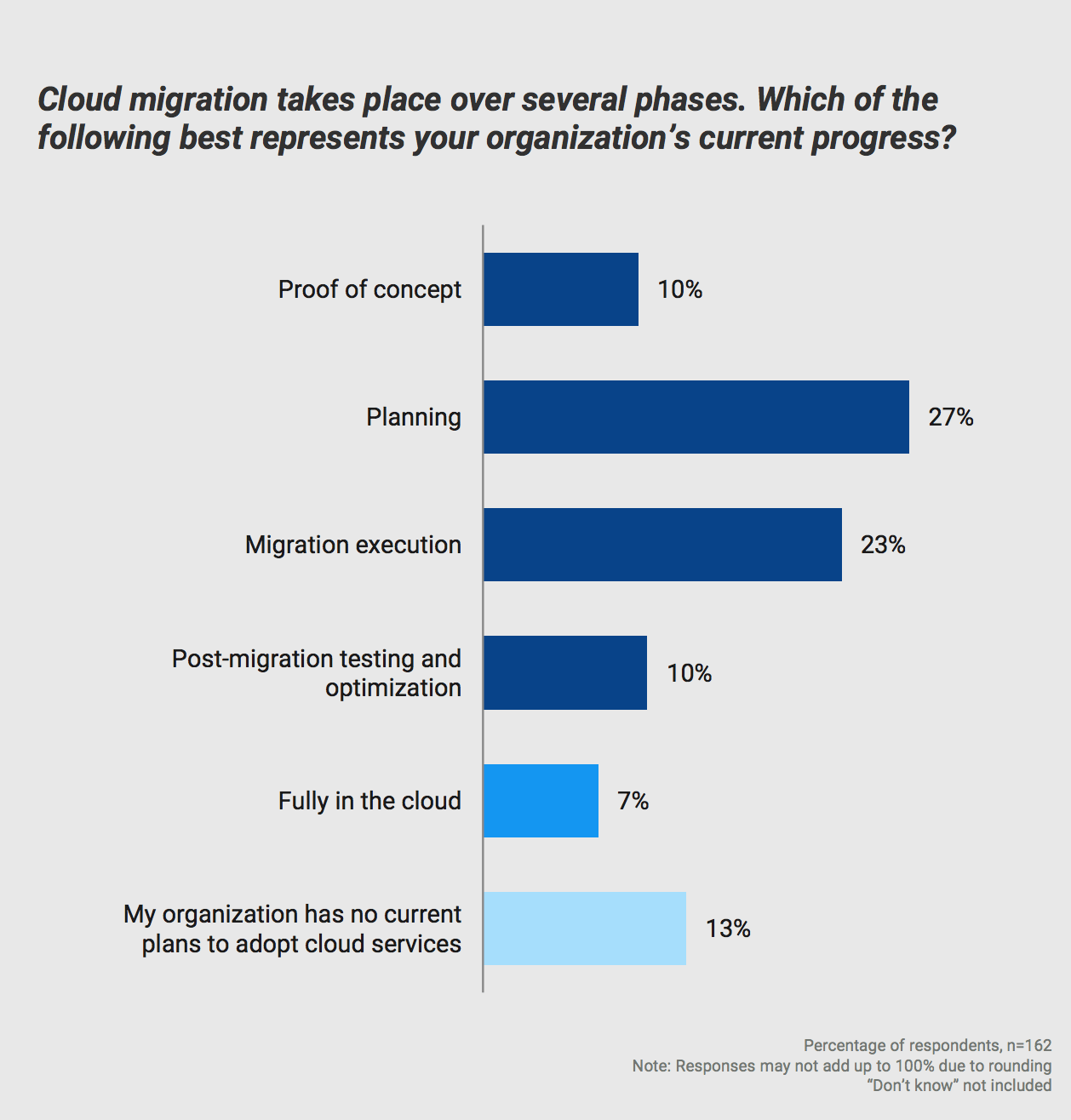
Most organizations are in the proof of concept, planning, migration execution, or post-migration testing/optimization phases of cloud migration. 13% of respondents say that their organization has no current plans to adopt cloud technologies.
83% of respondents say that their organization is not yet fully in the cloud.
Organizations’ cloud adoption efforts have been relatively successful
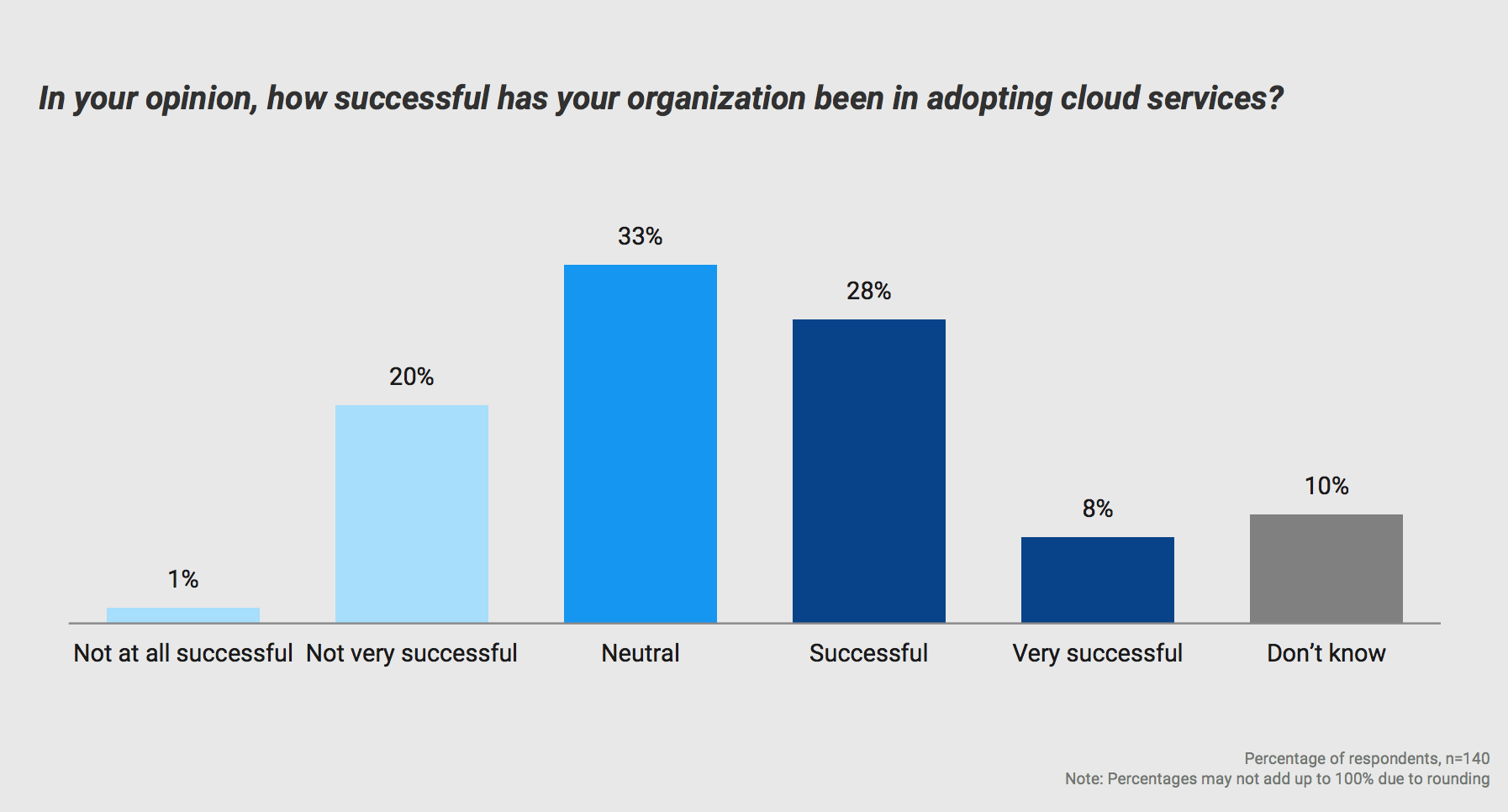
36% of respondents feel that their organization has been successful or very success in adopting cloud services, 33% are neutral, and 21% feel that cloud adoption has been not very or not at all successful.
36% of respondents feel that their organization’s cloud adoption efforts have been successful or very successful.
Cloud has yielded positive outcomes for most organizations
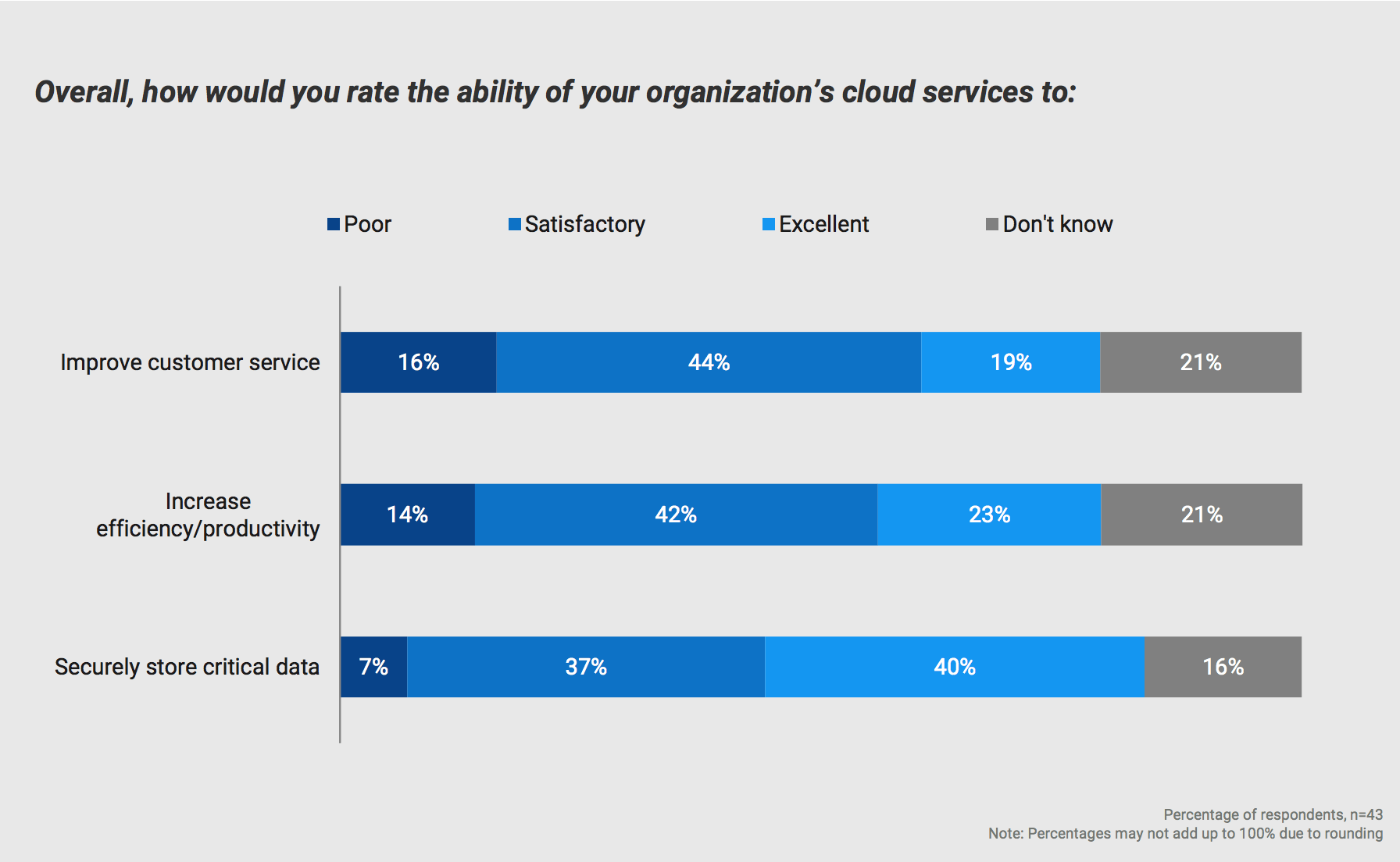
Most respondents feel that their organization’s cloud services have been satisfactory or excellent with regard to improving customer service, increasing efficiency and productivity, and securely storing critical data.
Respondents see various potential cloud benefits
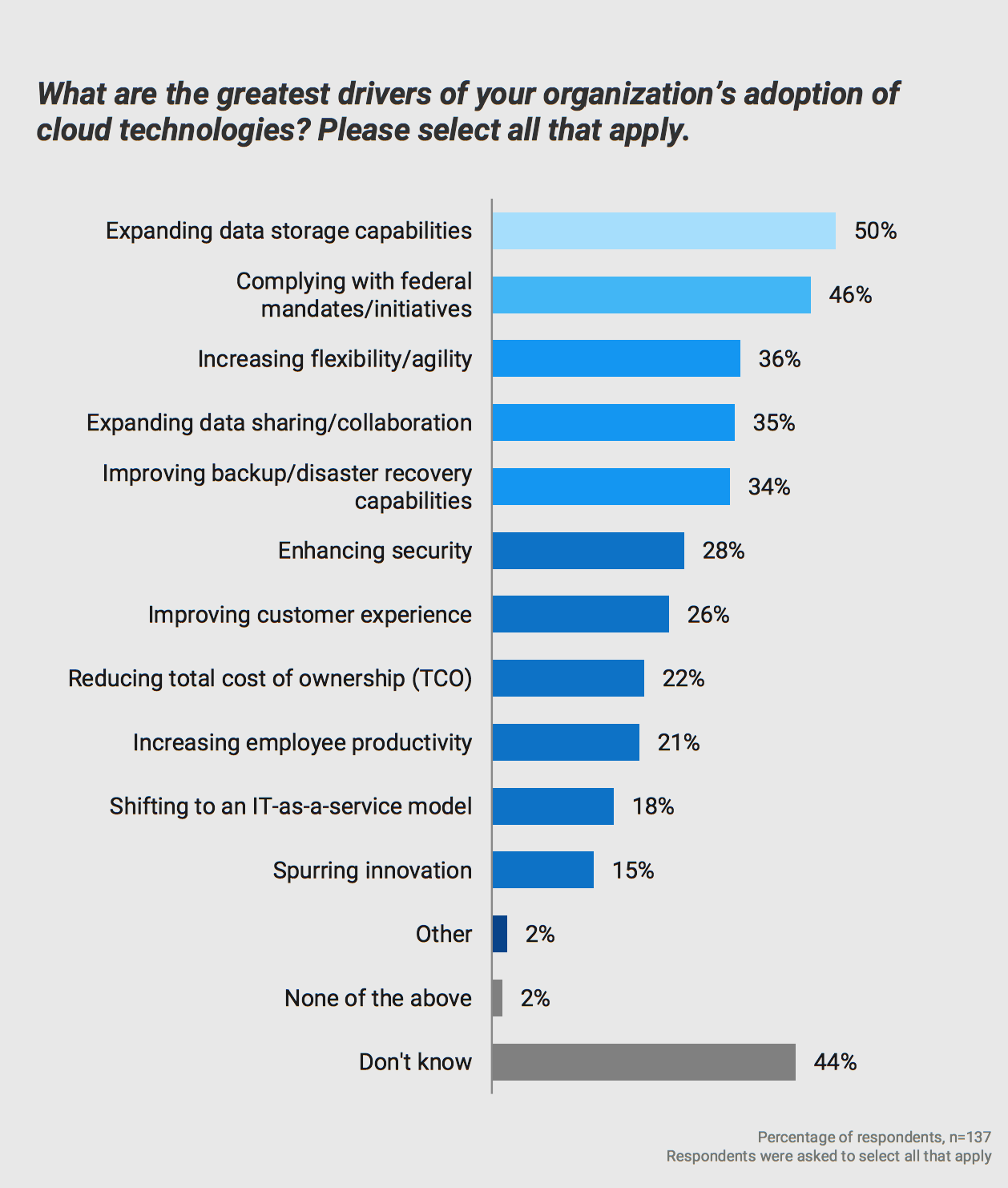
Other noted drivers include complying with federal mandates/initiatives, increasing flexibility/agility, expanding data sharing/collaboration, and improving backup/disaster recovery capabilities.
50% of respondents identify expanding data storage capabilities as one of the primary motivators for their organization’s cloud adoption.
Respondents identify various cloud migration challenges
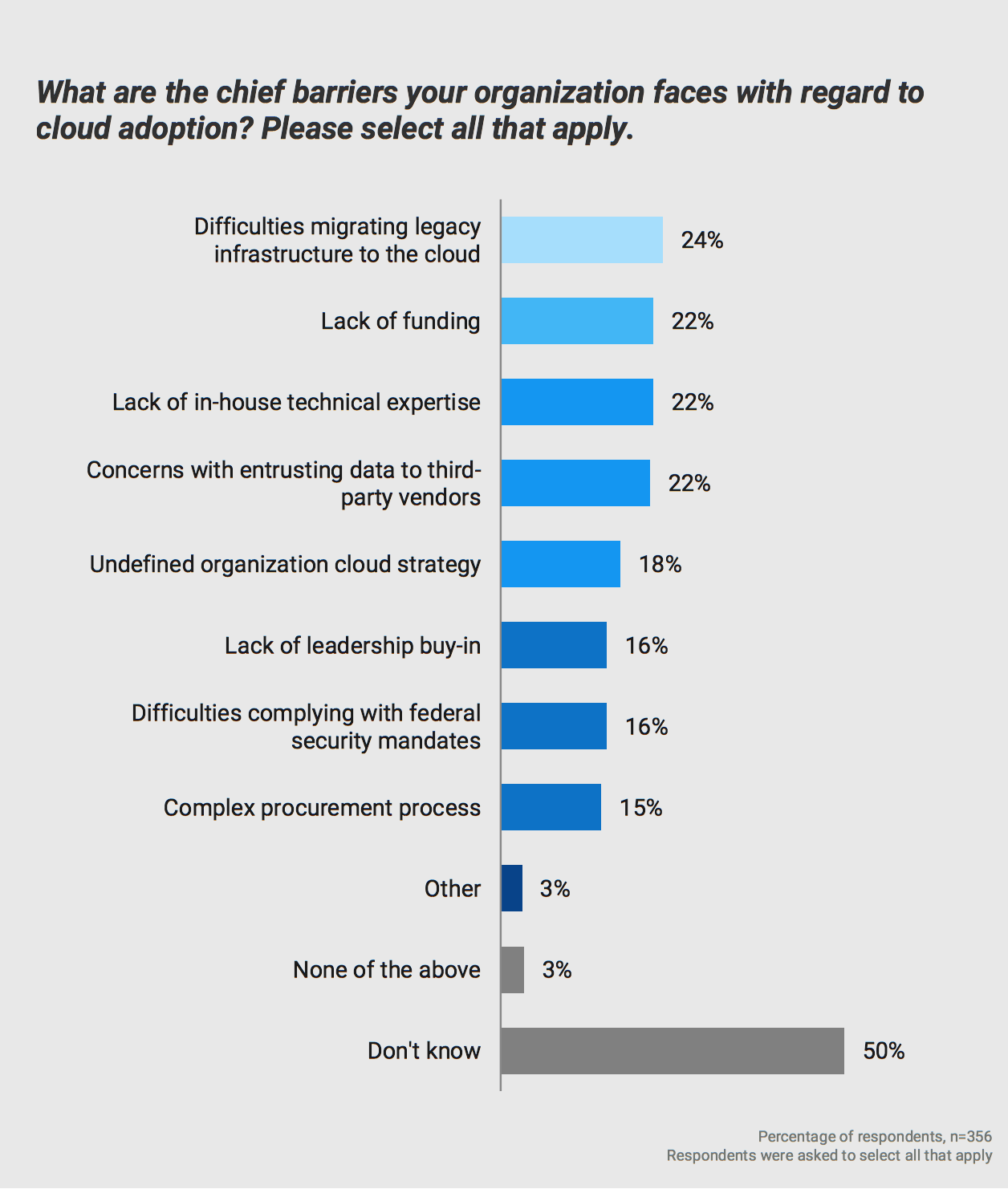
Respondents feel that difficulties migrating legacy infrastructure to the cloud, lack of funding, lack of inhouse technical expertise, and concerns with entrusting data to third-party vendors represent some of the chief barriers their organization faces with regard to cloud adoption.
Final Considerations
Looking ahead, federal organizations should…
Familiarize themselves with the potential benefits of shared services and cloud
The federal government is increasingly invested in modernizing workplace technologies; however, in spite of the May 2017 cybersecurity executive order calling on organizations to “show preference in their procurement for shared IT services,” many agencies have yet to prioritize intra-agency shared services adoption. In addition, while many respondents note that shared services have positively impacted cost-effectiveness, quality, and timeliness of service delivery, a large percentage are unsure of the benefits of shared services. Federal employees seem more familiar with the possible advantages offered by cloud services; however, as with shared services, many organizations are still at the beginning of their adoption journey, with respondents noting a wide range of barriers hindering migration.
Insights from Okta
Sponsored Content
When meeting with agencies across government, we hear time and time again that one of the greatest challenges to successful cloud adoption is cultural adoption, closely followed by budgetary restraints and insufficient technical expertise. The results of this study confirm this. Although government launched the “cloud first” charge in 2011, 83% of organizations note that they are still not fully to the cloud today. The good news is that IT modernization is being supported across all levels of government like never before. Now is the time to rethink traditional approaches, and identity is a perfect place to start. A best-in-class IDaaS solution purpose-built for the cloud can ease the migration of legacy infrastructure to the cloud, enable dramatically faster adoption of new cloud applications, and connect every employee vendor, partner or citizen to the tools they need with security that doesn’t sacrifice ease of use. Cloud identity management offers the benefits of reduced costs, simplified architecture, seamless user experience, and high availability without requiring in-house expertise. Identity is the key to moving forward on your modernization journey. Moving forward, organizations might consider further familiarizing themselves with and communicating the benefits of shared services and cloud: leadership and workforce buy-in is perhaps the most crucial prerequisite for successfully implementing new technologies.
Respondent Profile
Survey respondents are largely senior federal leaders
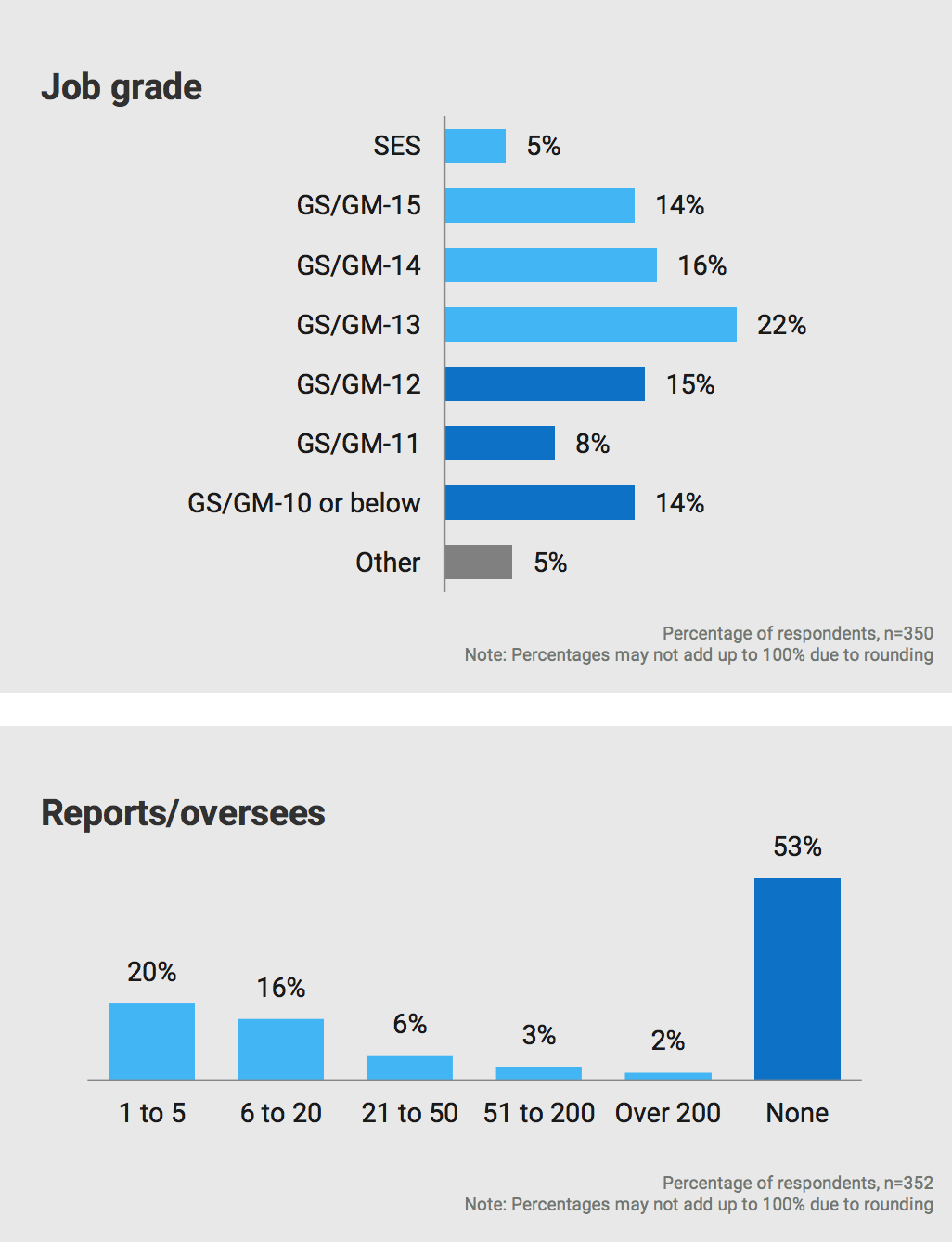
57% of respondents rank GS/GM-13 or above, including members of the Senior Executive Service (SES).
47% of respondents are supervisors who oversee at least one employee, either directly or through direct reports.
Respondents represent a wide range of federal agencies and job functions
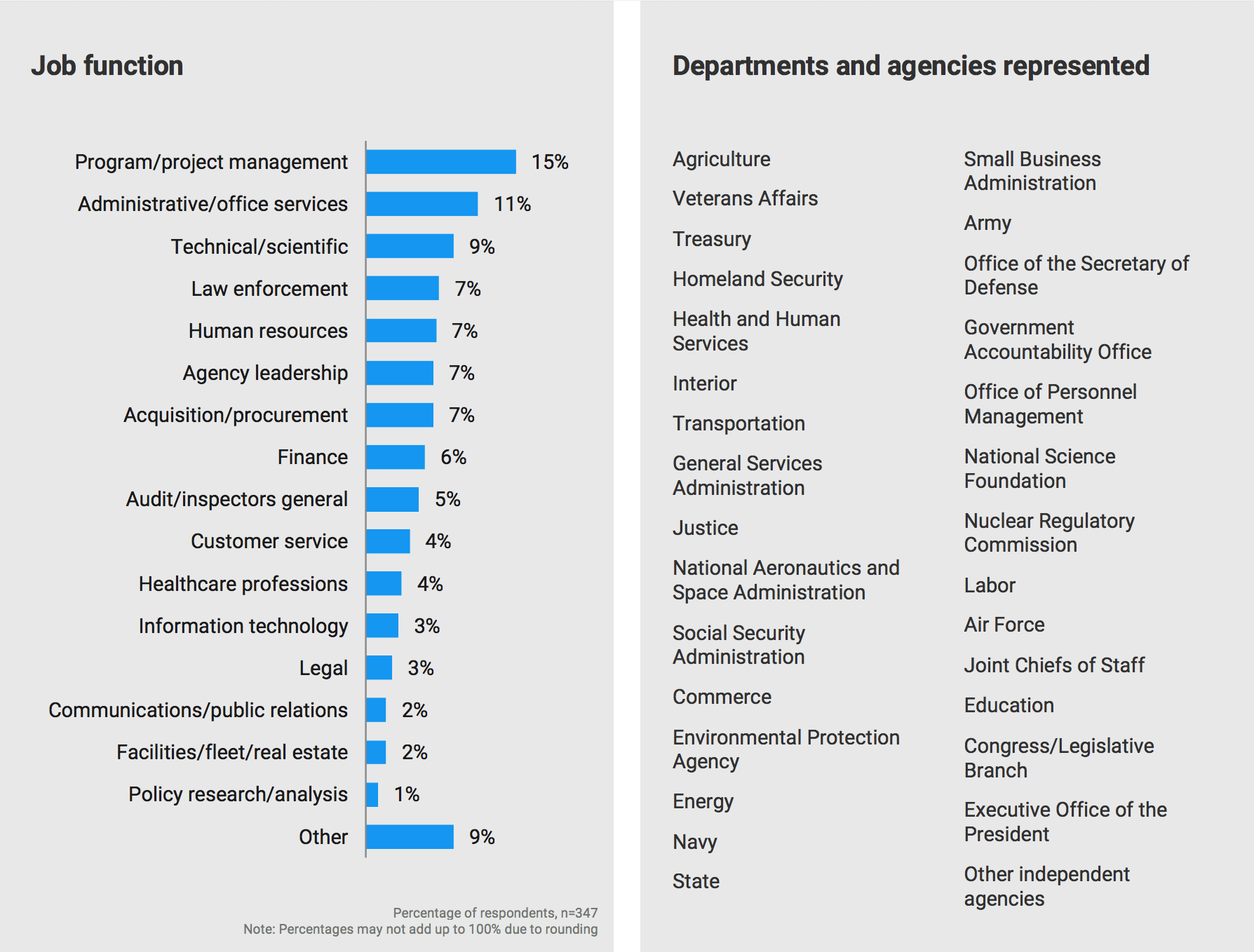
Respondents were asked to choose which single response best describes their primary job function.
Departments and agencies are listed in order of frequency.